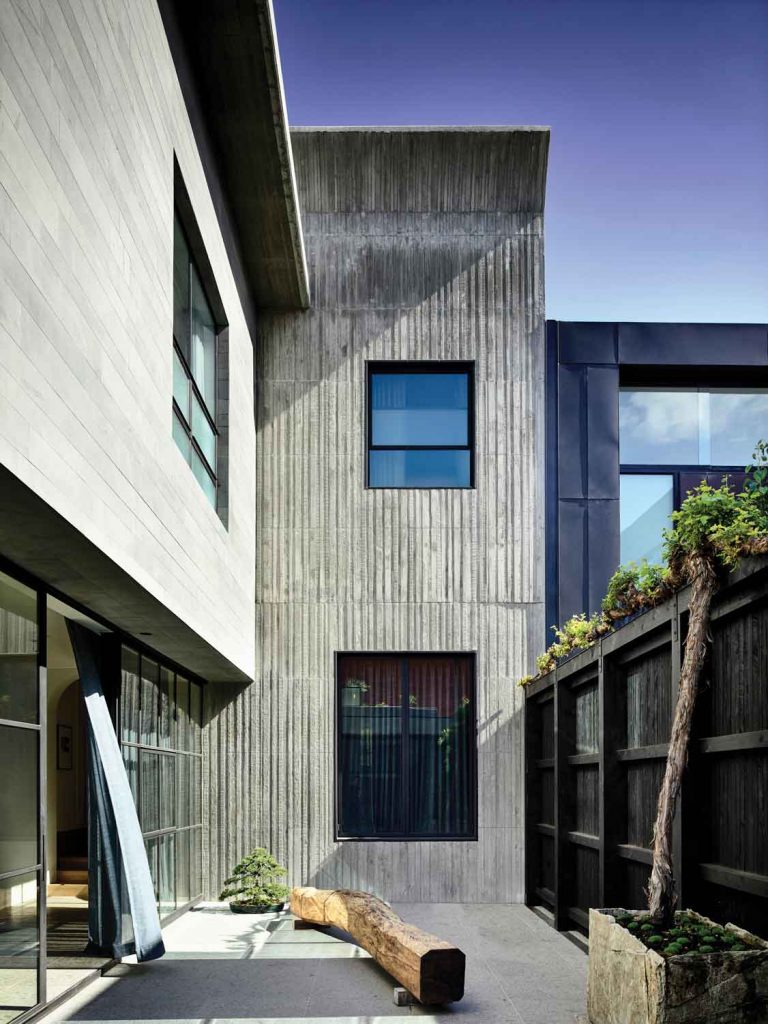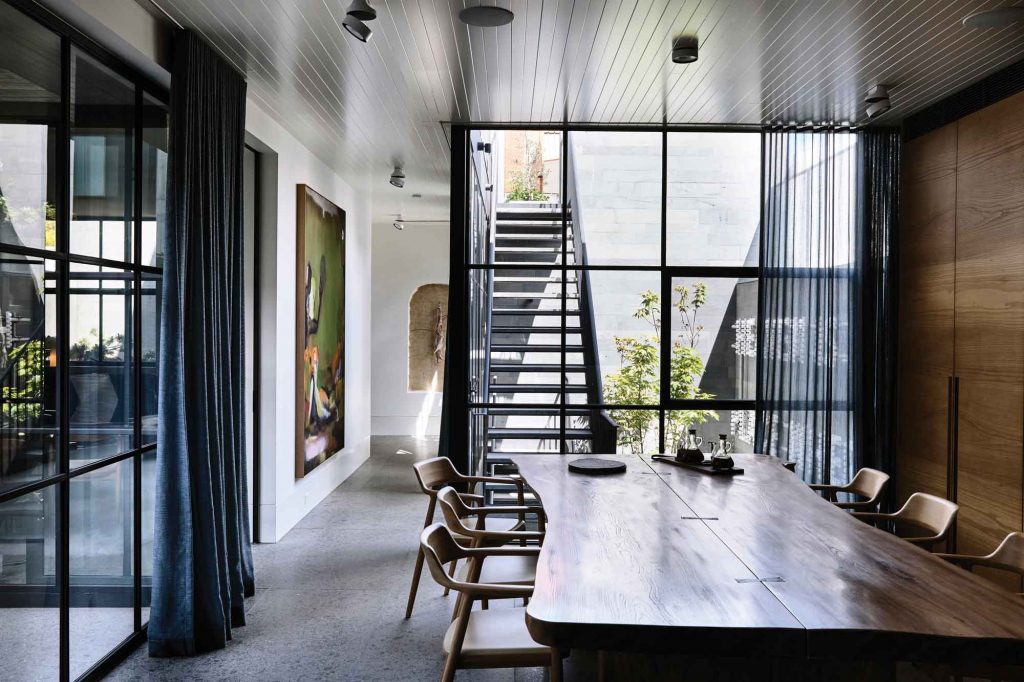Modern Renaissance
VAMP uncovers the mystical impression of St. Vincent’s Place, a residence in Melbourne, Australia. The intriguing space exhibits an absolute balance between historical architecture with its classical references and intricate craftsmanship with contemporary features.
Photography: Derek Swalwell
Architecture: Broderick Ely- B.E Architecture
An intriguing space that exhibits a balance between historical architecture and contemporary features.

As a modern renaissance home, St Vincent’s Place Residence is a new archetype developed through reinterpretation of classical references with a modern sensibility. The client, as a patron, put his belief in architecture, artists and artisans to create a nourishing environment that goes beyond surface treatments by inscribing contemplative experiences into the physical form.

Positioned behind a significant heritage façade, with its intricate designs and mystical impression, the new extension is a cultural bridge between historical significance and modern progress. Embracing the consideration of time, the design response examines pinnacles of architecture and design throughout history. It recreates original elements that extract and expand upon qualities of substance, inspired by those that are proven to span the test of time. Although the majority of the home is a new building, it is not immediately recognisable as such.
The reworking of older-style details in the front section of the original building includes curved cornices, arched doors and custom steel fireplaces, which are not typical modern construction methodologies but feel at ease within the Victorian frontage. Integral to the details is an authentic demonstration of the unusual level of craftsmanship, an appreciation of the capacity of mankind. Even the smallest of details, like the hand-stained dovetail joints along the timber skirting, is deserving of a moment’s reflection.
 Modern Renaissance
Modern Renaissance
The luminous and spacious dining area welcomes guests and family dinners on a large solid wood dining table that contrasts against the industrial-like panes of glass and iron-work.

The modern counterpart in the rear extension uses insitu concrete, terrazzo style stone floors, painted timber ceilings and bluestone walling to create a point of difference from the front. A zen-like ambience is created in the home’s attraction areas that are finished with stone flooring and with water presenting itself as a common element: the bathrooms, jacuzzi area and indoor pool. Rejecting stark minimalism, the classical details are exchanged for rich textures continuing the hand-hewn character throughout the house. As seen in the main bedroom, the white crisp walls are softened with classical interiors and warm textures. The high arches continue in this intimate space.
Leading the way to intellectual discourse, the substantial art collection explores topics of philosophy, literature, religion and even science. At moments these are literally written into the walls, such as the three-storey light well built around the light work. Heaven is a place where nothing ever happens by artist Nathan Coley and the niche installation of the wax sculpture Romeu ‘my deer’ by artist Berlinde De Bruyckere.

As carefully curated as the art collection, the interior for the house is an eclectic mix covering diverse cultural references across many eras. Many of the rooms are positioned around knowledge, encasing collections of books on expansive shelves and using them as a centrepiece within the custom coffee table in the living room.

A refined, casual aesthetic is created, incorporating unique vintage pieces sourced from Europe and Asia as a direct historic reference. Each piece adds to the dialogue of the space with exotic and interesting stories of when or where they are from or how they were created. Many of the pieces are one-of-a-kind designs by B.E Architecture, commissioned expressly for this project, pushing the artisanal character of the architectural detailing into the furniture.

Combining history, art and culture, the St Vincent’s Place Residence is ultimately a place of rebirth, simultaneously reviving an exceptional period home and cultivating a place of renewal that elevates the quality of life for the client.
The multidisciplinary B.E Architecture team addressed all elements of lighting, interiors and landscaping including many custom designed pieces of furniture. The design does not accept the limitations of a standard terrace house but creates new solutions to explore what is possible in the urban context. The team worked closely with the engineers to develop a commercial solution to support the existing house and allow the addition of the new basement.









